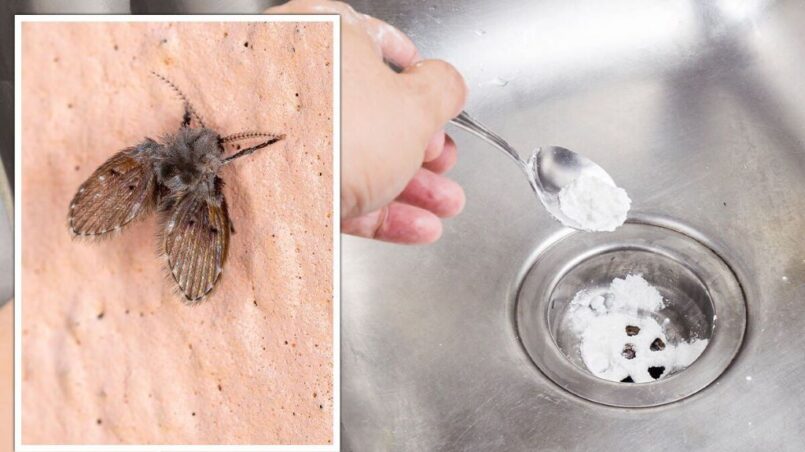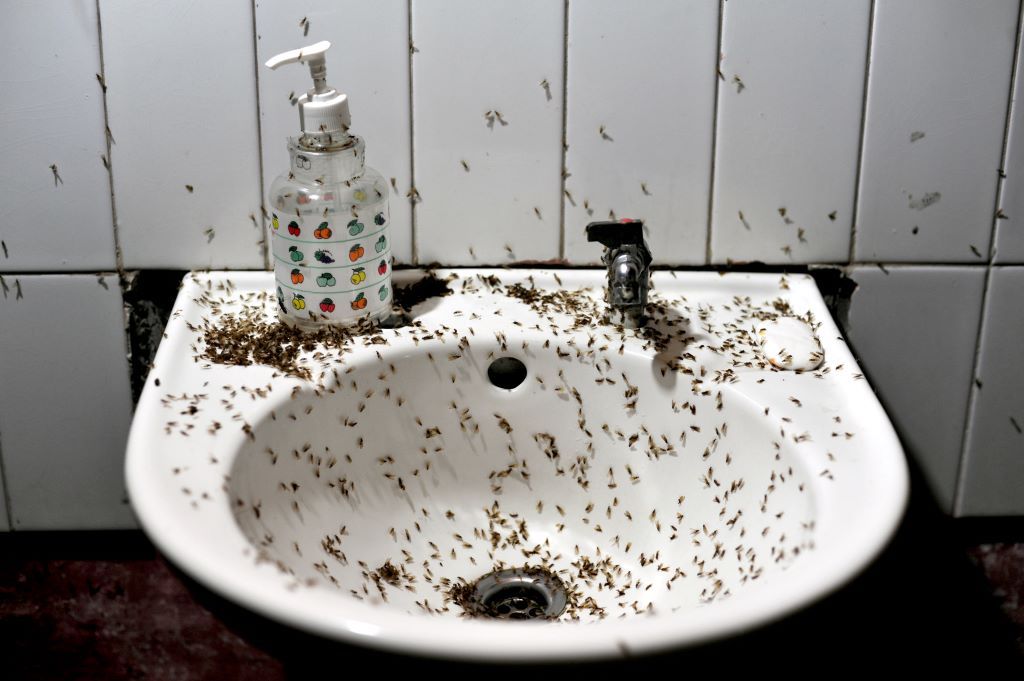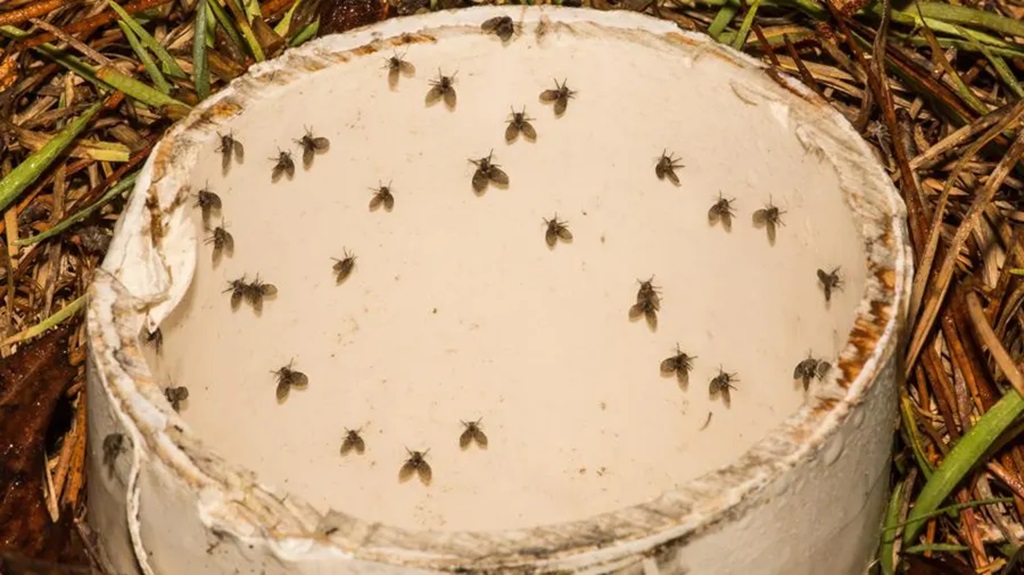You know what really grinds my gears? Opening up my sink cabinet, I saw a swarm of tiny flies hovering around. Drain flies – the tiniest and most annoying insects ever! At first when you notice one or two, you think huh, weird. But don’t underestimate them. Faster than you can say “pest control,” you’ve got a full-blown infestation on your hands. I speak from personal experience here, folks.
The good news is getting rid of drain flies isn’t nearly as hard as you might think. You just need some determination and the right techniques. I’m going to walk you through how to kill drain flies. Let’s do this thing!
Step 1: Understand Why Drain Flies Hang Around
Before we nuke these things, it helps to understand what makes your drains so attractive to them.
Drain flies are flippin’ small – like only 1/5 of an inch – and they thrive in moist, gross environments. Think wet sludge, mold, rotten leaves, and residue sitting at the bottom of pipes, drains or garbage disposals. Most of us don’t even notice the gunk building up, but drain flies have a freaky sixth sense for finding it.
The females lay their eggs down there, and the larvae hatch and grow feeding on bacteria and fungi. Then eventually they mature into wings, gain the ability to fly, and zoom up into your sink.
So step one is accepting your drains need some TLC. Don’t feel bad, water lines are challenging to keep pristine at the best of times. While irritating, a drain fly infestation means you’ve got an opportunity to give those pipes a deep clean.
Step 2: Wage War on Drain Fly Larvae
Drain flies may be the visible annoyance, but their larvae down in your drains are the real villains. They’re extremely challenging to fully eradicate.
Getting rid of larvae means scrubbing and disinfecting your drain system to eliminate their food source. So let’s grab some supplies and get to work:
What You’ll Need:
- Rubber gloves
- Scrub brush or pipe cleaner
- Baking soda
- White vinegar
- Very hot water
- Bucket
Start by mixing a paste of 1 part baking soda to 2 parts white vinegar. Carefully pour it down each drain. Place a bucket underneath to catch the runoff.
Then use your scrub brush or a pipe cleaner to vigorously scrub the inside of drain pipes to dislodge gunk. Flush several rounds of very hot water. The abrasion plus heat will destroy bacteria and fungus larvae feed on.
It’s tedious work, but crucial. Getting rid of all edible residues down there means it’s impossible for larvae to survive.
A few hours of elbow grease now saves you from dealing with a recurring swarm. Believe me, it’s worth it not to have to battle these things again in a month. Prevent the problem rather than endlessly treat symptoms.
Step 3: Install Drain Covers
Alright, so you’ve nuked all possible food sources down your drains. But remaining larvae may still crawl up through tiny cracks and crevices.
Installing drain covers blocks their route to your sink while still allowing water flow. A cheap, two-second solution that cuts off larvae’s path to maturity. Most hardware stores sell drain covers for a few bucks.
Simply measure your drain size, trim any excess plastic from the cover, and stick them into sink and tub drains. Most use a friction fit or suction cups to stay snugly in place. Easy peasy!
They don’t affect water drainage but form an impenetrable barrier, trapping larvae under the sink rather than up in your business.
Some even have fine mesh screens to block tiny insects. So they prevent future infestations if new eggs get laid down there. Highly recommend!
Step 4: Deploy Drain Fly Traps
Now here comes the fun part – trapping and catching the remaining adult flies already hatched and zooming around.
While scrubbing and covering target larvae, we still need to eliminate current generations. Drain fly traps draw in adults where they get stuck on glue or drown.
You’ve got a couple of options here:
- DIY Milk Trap – Simply pour some milk down your drain. The smell attracts flies who land on the surface, get stuck and eventually drown.
- DIY Vinegar and Dish Soap Trap – Mix apple cider vinegar, dish soap, and some water. The sweet vinegar scent pulls them in while the soap reduces surface tension causing them to sink and drown once they touch down.
- Store-bought Drain Fly Traps – These use colors and smells tailored specifically to entice drain flies in. Then they’re greeted by glue, poison or drowning solutions.
I prefer store-bought traps honestly, the formulations seem the most effective. But if needed, household items work pretty well too.
Strategically place traps around sinks and tubs where you see flies gathering. Some even have handy hangers allowing you to lower traps right into drain openings.
No more flying pests buzzing around up top, and larvae can’t ascend from below. Now we’ve got them surrounded!
Step 5: Break Out the Vacuum
As satisfying as traps may be, they likely won’t get 100% of adults. So it’s time to suck up the stragglers!
Plug in your trusty old vacuum and patrol around your bathroom. Vacuum-swarming flies up against walls, above sink basins, or anywhere else they gather. The suction literally rips them right out of the air to their doom.
The hose attachment is great for precision fly strikes. It’s almost like a bug zapper without the annoying zapping sounds. Get creative aiming from different angles if needed – no fly shall evade your pursuit!
Perhaps a little morbid, but highly effective. And so gratifying to see your harvest emptied into the debris canister.
Keep at the trapping and vacuuming daily until all flies are gone. Then do periodic checks for any strays trying to stage a comeback. Shut that down quick with more scrubbing, traps and suction power if you spot a resurgence.
Step 6: Pour Some Baking Soda and Vinegar
As a final cleaning measure once all visible flies are gone, let’s hit the drains again. Baking soda and vinegar flushes one last time for good measure.
Start by pouring a mound of baking soda down each drain. Then follow with an equal amount of household vinegar. The chemical reaction causes fizzing and foaming, helping break up and push out residual gunk.
After 5 minutes, run very hot water to rinse the remains away. This helps eliminate any lingering traces of fungus or bacteria. And provides a clean slate making it impossible for new larvae colonies to take hold.
Consider this regular drain maintenance moving forward. Once a month or so, bake some soda – add a splash of vinegar, baby you got a clean going! Keeps pipes cleared and removes nesting spots for future fly issues.
Step 7: Take Out the Trash
Flies breed fast. Like 20-100 eggs at a time, y’all. So while you’re cleaning drains, be sure to remove all garbage frequently.
Rotting food waste or leaky bags creates an open buffet for flies to lay eggs. And that 20 eggs can turn into hundreds of buzzing buddies surprisingly fast. No thanks!
Be diligent in taking out the trash a minimum of twice a week – outside to secured bins, not overflowing inside. This removes breeding grounds and cuts off another easy access point.
Step 8: Spray Some Essential Oils
Alright, last tip – essential oils help repel flies attempting to return post-cleanup. Their strong scent overwhelms tiny fly senses making them buzz off rather than land.
Oils like eucalyptus, peppermint, lavender or lemongrass work well. Add several drops to a spray bottle filled with water. Mist around your sinks, windows and doorways. Smells nice with the bonus benefit of discouraging return visits!
Over To You! Whew, who knew such tiny flies could require so much strategy! But stay vigilant and keep attacking with these steps, and you’ll be fly-free in no time.
To effectively combat a fruit fly infestation, remember that prevention is the simplest approach—regularly cleaning and maintaining drains can thwart larvae from establishing a foothold. However, if faced with an active swarm, initiate an all-out war using scrub brushes, traps, and vacuums for effective eradication.
Here’s to reclaiming your space and winning the battle royale against drain flies once and for all! Go get ‘em!
FAQs
What causes drain flies, and how do I prevent their infestation?
Drain flies breed in organic matter buildup in drains, pipes, and sewage systems. To prevent infestations, regularly clean and maintain drains, dispose of food waste properly, and use drain covers.
How can I identify drain fly breeding grounds in my home?
Look for signs like small, dark spots in drains, a musty odor, or the presence of adult drain flies. Inspect kitchen and bathroom drains, as well as areas with standing water.
What are effective home remedies to kill drain flies?
Use a mixture of baking soda and vinegar or a bleach solution to clean and disinfect drains. Alternatively, commercial drain cleaning products or biological drain cleaners containing enzymes can be effective.
Are there natural methods to get rid of drain flies without using chemicals?
Yes, natural methods include using essential oils like tea tree or eucalyptus oil, creating a vinegar trap, or introducing beneficial bacteria products specifically designed for breaking down organic matter in drains.
How long does it take to eliminate drain flies, and when should I seek professional help?
The time to eliminate drain flies varies based on the severity of the infestation and chosen treatment. If home remedies don’t work within a week or two, or if the infestation persists or worsens, it may be necessary to consult a pest control professional for a thorough assessment and targeted treatment.








